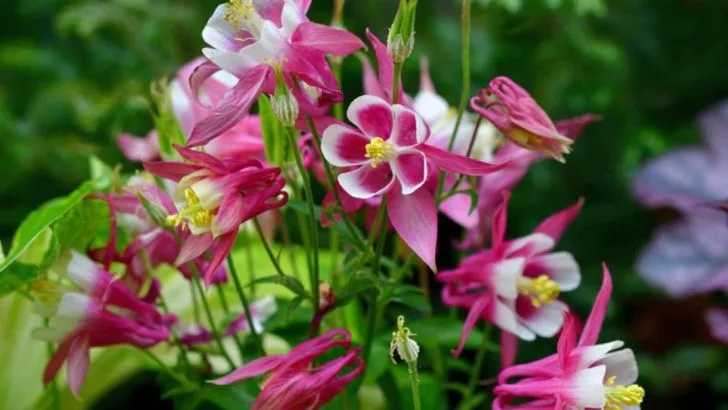Your garden shouldn’t fizzle just because the tulips are done showing off. There’s a sneaky lull between spring bulbs and summer’s fireworks—when things look… tired. Bare spots. Faded greens. A whole lot of “meh.” But it doesn’t have to be that way. Enter the late spring perennials—those glorious scene-stealers who step in just when the daffodils bow out. Salvias strut. Peonies take over the runway. Catmint? It’s out there working overtime. These 16 bloom-gap heroes keep the color rolling while everyone else hits snooze. They’re not filler. They’re not backup. They’re the headliners you didn’t know you needed. So if your garden feels like it’s holding its breath in late May, plant these and exhale. Because beauty shouldn’t pause between seasons. And your garden deserves an encore—every week.
Peony
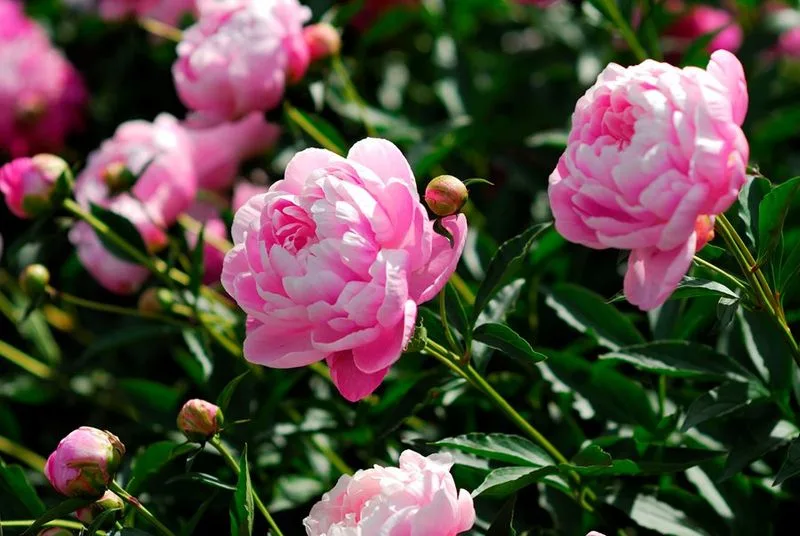
Peonies are a timeless addition to any garden, offering fragrant blooms and lush foliage. Their large, showy flowers can be found in a variety of colors, from soft pink to deep red. With roots in Chinese culture, peonies symbolize wealth and honor. They’re cherished for their longevity, often living for decades with minimal care.
These perennials prefer sunny locations with well-drained soil and can be a focal point in floral arrangements. Investing in peonies means enjoying abundant blooms year after year. Their elegance never fails to captivate, making them a garden favorite.
Iris

The iris, with its sword-like leaves and striking blooms, is a staple in many gardens. Known for their resilience, irises thrive in diverse conditions, from sunny borders to shaded ponds. Their blooms, often in blues and purples, offer a striking contrast to surrounding greenery.
A symbol of wisdom and valor, irises have been admired for centuries. They are easy to care for and can spread quickly, providing a lush appearance. Each variety brings its own unique charm, ensuring that irises remain a beloved choice for gardeners worldwide.
Columbine
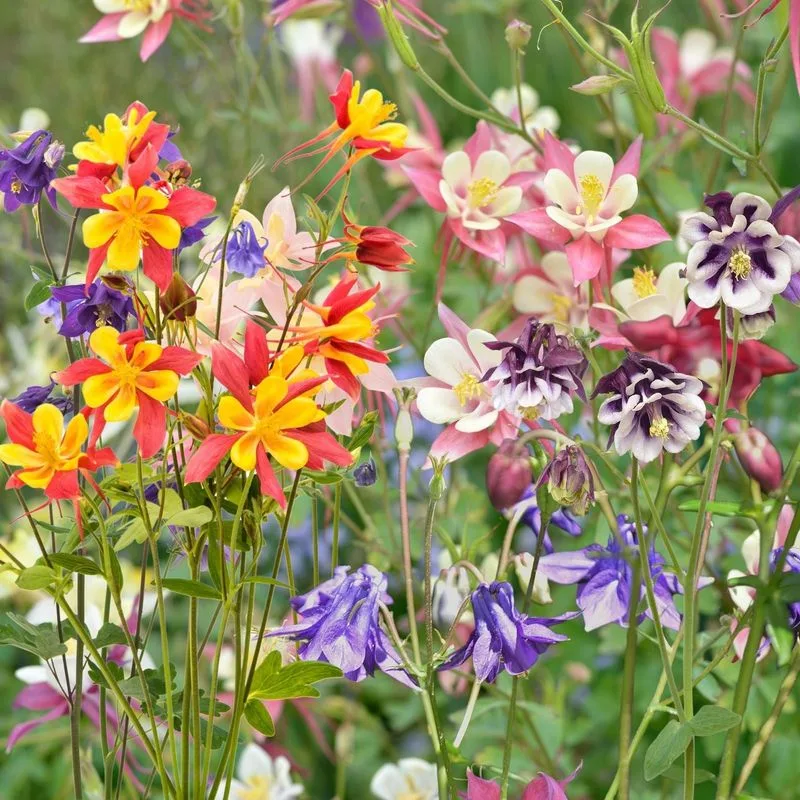
Columbines are whimsical flowers, capturing hearts with their unique, spurred blooms and delicate foliage. They are particularly adored by hummingbirds and bees, making them an excellent choice for wildlife-friendly gardens.
Blooming in a range of colors, columbines add a magical touch to any garden. Their ability to thrive in shaded areas makes them versatile, offering beauty where other plants may struggle. Originating from the woodlands, these perennials embody a sense of mystery and enchantment. Columbines are a testament to the wonders of nature’s creativity.
Lupine
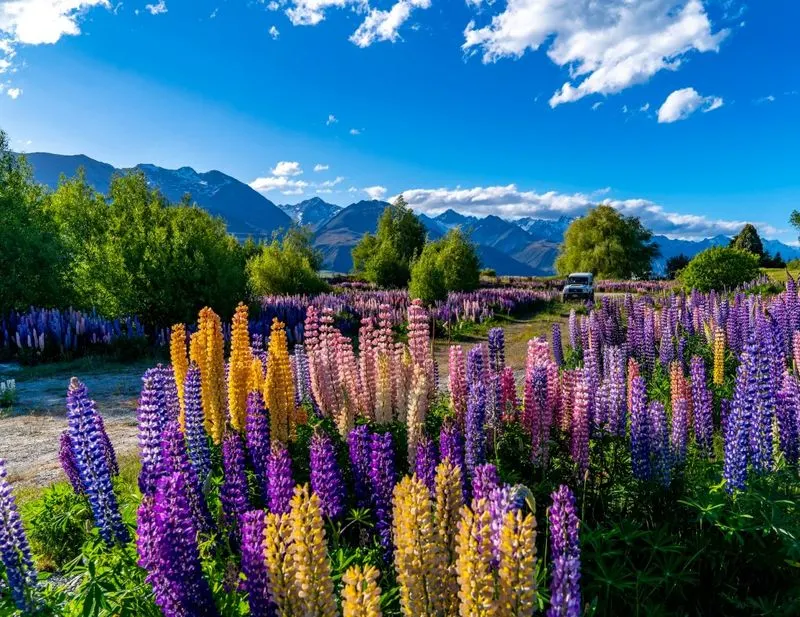
Lupines are known for their towering spires and vibrant colors, painting gardens with their rich hues. These hardy perennials are nitrogen-fixers, enriching the soil as they grow. With origins in North America, lupines are well-suited to a variety of climates.
Their striking presence makes them a standout in any garden, often blooming in late spring. Lupines attract pollinators, supporting the ecosystem while delighting the eye. Their unique leaf structure adds textural interest, ensuring that they provide visual appeal even after the flowers fade.
Bleeding Heart

Bleeding hearts enchant with their heart-shaped flowers, offering a romantic touch to shaded garden spaces. These perennials bloom in delicate shades of pink and white, creating an air of elegance. Originating from Asia, they are steeped in folklore and symbolism.
Bleeding hearts prefer cool, shady environments, where they add charm and whimsy. Their unique shape and cascading habit make them a focal point in any garden. As a woodland plant, they require minimal maintenance, providing beauty with little effort.
Allium
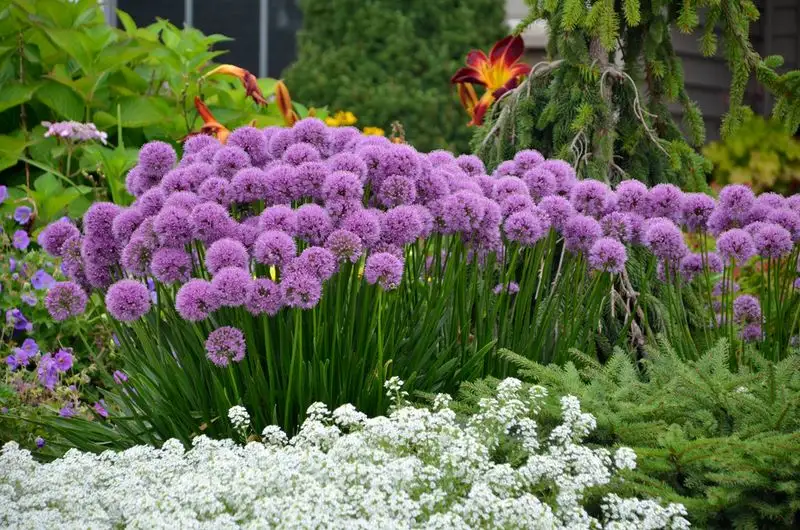
Alliums offer whimsical spherical blooms that add architectural interest to gardens. These onion relatives are loved for their tall stems and vibrant purple or white flowers.
Known for deterring pests, alliums are a practical yet beautiful choice. Their blooms appear in late spring, bridging the gap between spring and summer. Easy to grow, they thrive in sunny spots and well-drained soil. Whether used in borders or as cut flowers, alliums bring a modern touch to gardens. Their distinct shape and bold color make them memorable additions.
Foxglove

Foxgloves stand tall in the garden, with their spires of bell-shaped flowers offering a fairytale-like appeal. Despite their beauty, they are known for their toxicity, a detail that adds a hint of danger to their charm.
These perennials thrive in part shade and well-drained soil, bringing vertical interest to garden beds. Originating from Europe, they have a long history of medicinal use. Foxgloves are pollinator-friendly, attracting bees to their tubular blooms. Their striking appearance ensures they remain a garden favorite.
Aquilegia
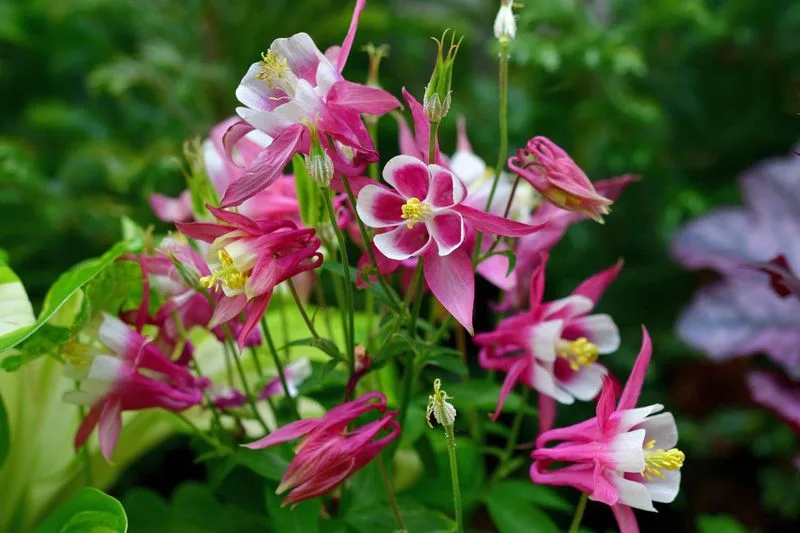
Aquilegia, also known as columbine, offers delicate, nodding flowers that captivate with their intricate petal structures. This perennial thrives in woodland settings, where its elegance shines.
Blooming in spring, it bridges the floral gap with its vibrant colors. Aquilegia’s resilience and ability to self-seed make it a gardener’s ally. Its name, derived from Latin, hints at its graceful, eagle-like flower spurs. Whether in borders or containers, Aquilegia brings a touch of wild beauty, enchanting with its gentle charm.
Brunnera
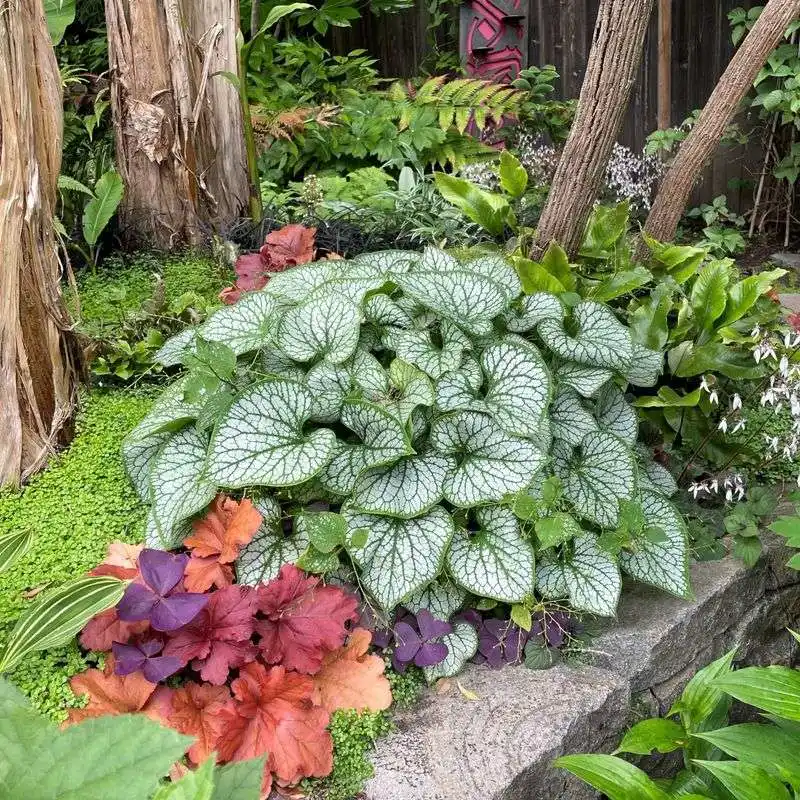
Brunnera, with its heart-shaped leaves and tiny blue flowers, is a shade garden staple. Often likened to forget-me-nots, this perennial offers a carpet of color in woodland settings.
Brunnera is appreciated for its low maintenance and ability to thrive in shady areas. Its bold foliage adds texture, while the delicate flowers provide a pop of color. A reliable choice for gardeners, Brunnera is both hardy and beautiful, offering a sense of tranquility and continuity in garden design. Its timeless appeal makes it a cherished addition.
Salvia
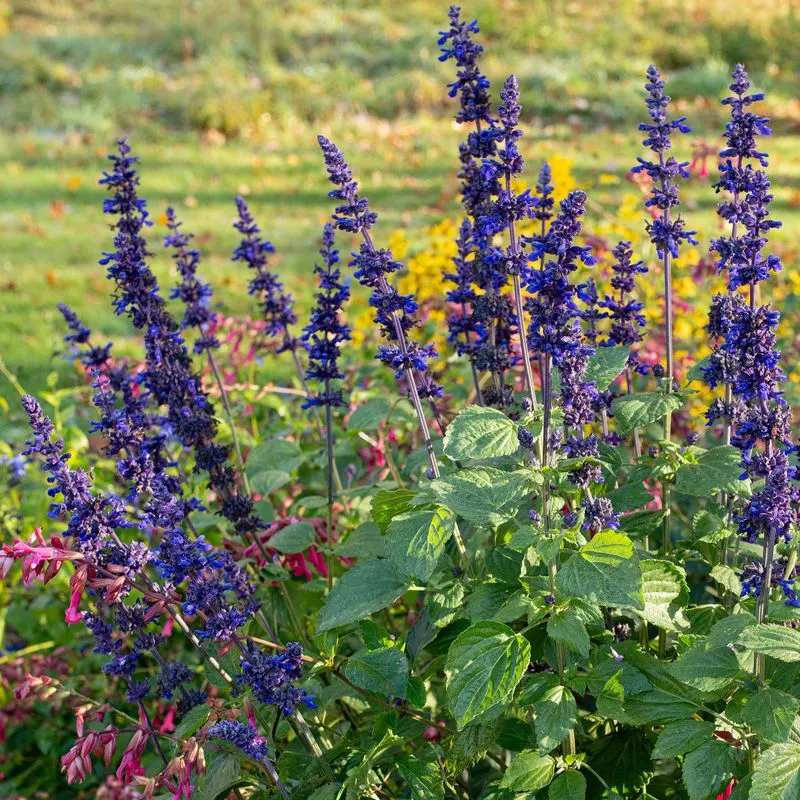
Salvia, with its aromatic foliage and vibrant spikes of flowers, is a drought-tolerant addition to gardens. Known for attracting pollinators, its blooms in purple, blue, and red brighten any space.
This hardy perennial thrives in sunny locations and is perfect for borders and containers. Salvia’s long blooming period ensures continuous color, and its deer resistance adds to its appeal. With over 900 species, it offers endless variety. Salvia’s uplifting presence ensures it remains a favorite among gardeners seeking low-maintenance, vibrant plants.
Coreopsis
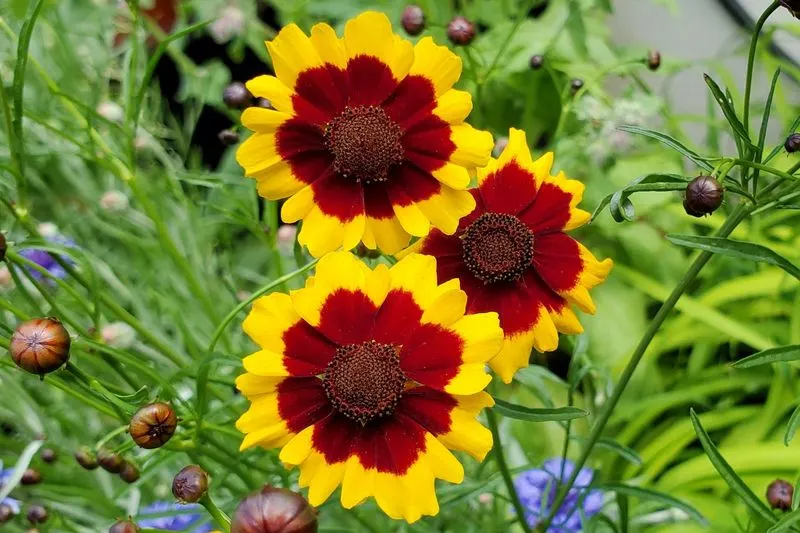
Coreopsis, often called tickseed, offers sunny, daisy-like blooms that bring warmth to gardens. These perennial flowers thrive in poor soil and require little water, making them ideal for low-maintenance landscapes.
Their bright yellow petals and long blooming season make them a cheerful presence. Coreopsis attracts butterflies, adding movement and life. Native to North America, these plants demonstrate adaptability and resilience. Whether in borders or wildflower meadows, coreopsis provides a reliable splash of color, embodying the spirit of summer.
Perennial Geranium
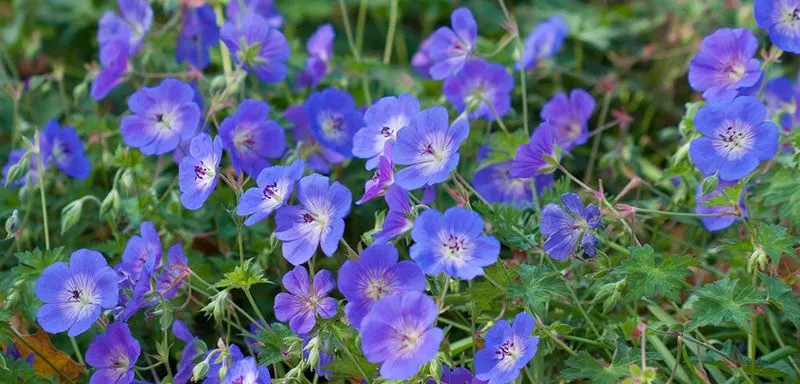
Perennial Geraniums, not to be confused with annual types, offer sprawling mounds of colorful blooms. Their vibrant flowers in pink, purple, and white enhance garden designs with ease. Low-growing and spreading, they are perfect for ground cover.
These geraniums are deer resistant and thrive in many conditions, including shade. Their long blooming season and minimal care requirements make them a gardener’s delight. As a versatile plant, they add color and texture, creating a tapestry effect in gardens. Their charm and reliability ensure they remain popular.
Astilbe
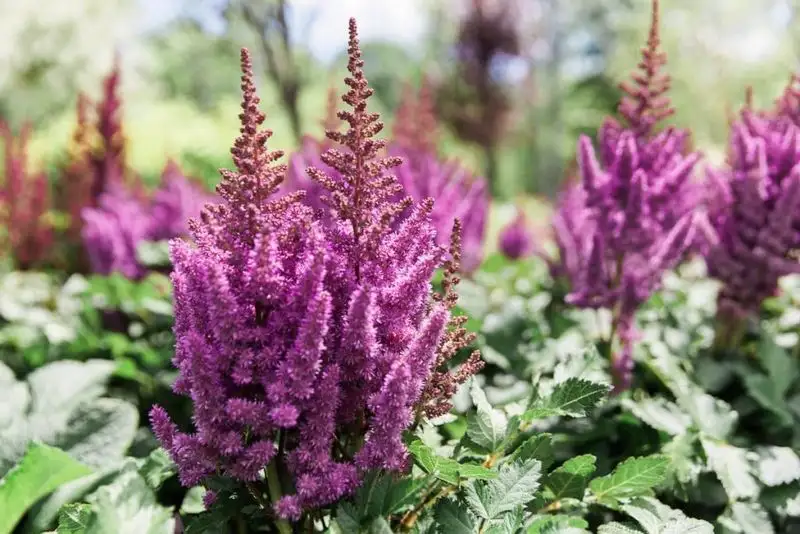
Astilbe brings elegance to shaded gardens with its feathery plumes in vibrant colors. These perennials thrive in moist, rich soil, offering a lush, tropical appearance.
Their foliage remains attractive throughout the season, providing texture and interest. Astilbe is perfect for borders and woodland gardens, where its flowers can shine without direct sun. Known for its deer resistance and minimal care, it offers beauty with ease. Astilbe’s graceful presence makes it a beloved choice for adding elegance to shaded landscapes.
Siberian Iris

Siberian Iris offers elegant blue blooms that sway gracefully in the breeze. Originating from wetland areas, these perennials thrive in moist soil and full sun. Their slender, arching leaves add texture and movement to gardens.
Siberian Iris is easy to grow and resistant to pests, making it a reliable choice for gardeners. Its long-lasting flowers provide color well into summer, bridging the gap between spring and summer blooms. Their sophisticated beauty and adaptability ensure they are a cherished addition to any garden setting.
Catmint
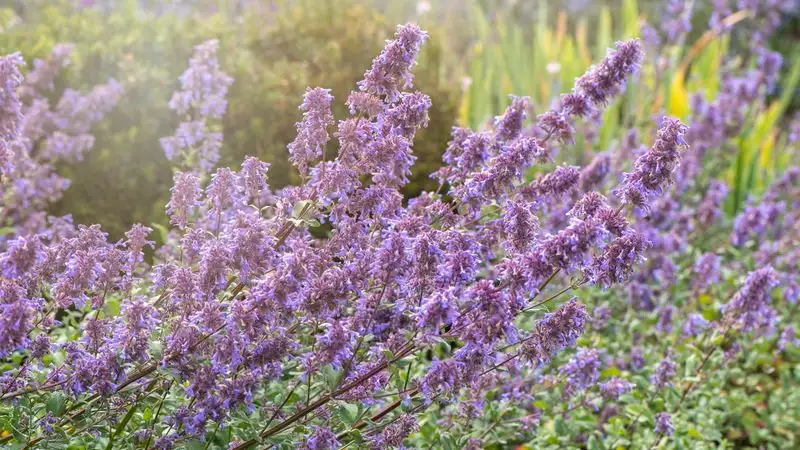
Catmint, known for its fragrant foliage and soft lavender-blue blooms, is a favorite among gardeners. This hardy perennial is drought-resistant and thrives in sunny locations.
Catmint’s long blooming period and low maintenance needs make it an attractive choice for borders and edging. Its ability to attract pollinators and deter pests adds to its appeal. The gentle, aromatic presence of catmint creates a calming atmosphere, perfect for cottage gardens. Its versatility and resilience ensure it remains a popular addition to garden designs.
Baptisia (False Indigo)
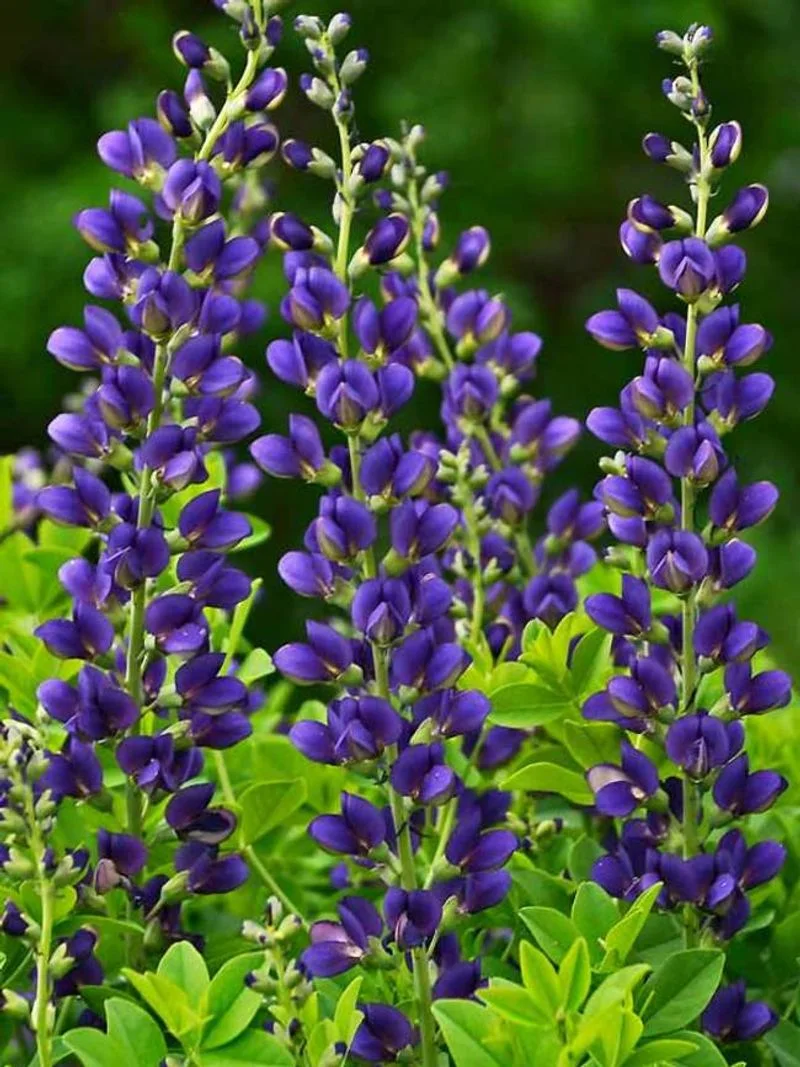
Baptisia, with its striking deep blue blooms, captivates those who chance upon its beauty. These sturdy plants grow gracefully, flourishing in well-drained soil and basking in the sun’s warm embrace.
In the garden, Baptisia acts as a stunning focal point, drawing the eye with its long-lasting spikes of flowers. Their foliage, a soft, dusty green, adds depth and variety to garden beds.
Interestingly, Baptisia has roots in Native American culture, where it was used as a dye, offering a beautiful indigo hue. This perennial is not just a feast for the eyes, but a piece of history.

